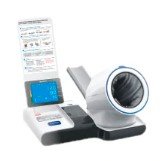Preventing Antimicrobial Resistance: Protocols for Phlebotomists in the US
Summary
- Phlebotomists in the United States follow strict protocols to minimize the risk of Antimicrobial Resistance during blood collection procedures.
- Proper Hand Hygiene, the use of sterile equipment, and following standard precautions are key components of these protocols.
- Adhering to these guidelines is crucial in preventing the spread of infections and maintaining patient safety in medical laboratory settings.
The Role of Phlebotomists in Preventing Antimicrobial Resistance
Phlebotomists play a crucial role in the healthcare system by collecting blood specimens for analysis in the laboratory. Their responsibilities extend beyond simply drawing blood, as they must also adhere to specific protocols to minimize the risk of Antimicrobial Resistance during blood collection procedures.
Understanding Antimicrobial Resistance
Antimicrobial Resistance occurs when bacteria, viruses, parasites, or fungi develop the ability to resist the effects of antimicrobial drugs. This can lead to infections that are more difficult to treat and pose a serious threat to public health. In the context of phlebotomy, reducing the risk of Antimicrobial Resistance is essential in maintaining patient safety and preventing the spread of infections.
Protocols Followed by Phlebotomists
Phlebotomists in the United States follow specific protocols to minimize the risk of Antimicrobial Resistance during blood collection procedures. These protocols include:
- Proper Hand Hygiene: Phlebotomists are required to wash their hands thoroughly with soap and water or use hand sanitizer before and after each patient encounter. This helps prevent the transfer of bacteria and other microorganisms from one patient to another.
- Use of Sterile Equipment: Phlebotomists must use sterile needles, tubes, and other equipment for each blood draw. This helps prevent contamination of blood samples and reduces the risk of introducing antimicrobial-resistant bacteria into the laboratory.
- Following Standard Precautions: Phlebotomists are trained to follow standard precautions, such as wearing gloves, masks, and gowns when necessary, to protect themselves and their patients from exposure to infectious agents. These precautions help minimize the risk of spreading antimicrobial-resistant infections.
Importance of Adhering to Protocols
Adhering to these protocols is crucial in preventing the spread of antimicrobial-resistant infections in medical laboratory settings. Failure to follow proper procedures can result in contamination of blood samples, misdiagnosis of infections, and the transmission of resistant pathogens to other patients. By following established protocols, phlebotomists can help protect patient safety and contribute to the fight against Antimicrobial Resistance.
Conclusion
In conclusion, phlebotomists play a vital role in preventing Antimicrobial Resistance in medical laboratory settings. By following strict protocols such as proper Hand Hygiene, the use of sterile equipment, and adherence to standard precautions, phlebotomists can minimize the risk of spreading antimicrobial-resistant infections. These measures are essential in maintaining patient safety, preventing the transmission of resistant pathogens, and preserving the effectiveness of antimicrobial drugs. It is imperative that phlebotomists receive proper training and support to ensure compliance with these protocols and contribute to the overall effort to combat Antimicrobial Resistance.

Disclaimer: The content provided on this blog is for informational purposes only, reflecting the personal opinions and insights of the author(s) on the topics. The information provided should not be used for diagnosing or treating a health problem or disease, and those seeking personal medical advice should consult with a licensed physician. Always seek the advice of your doctor or other qualified health provider regarding a medical condition. Never disregard professional medical advice or delay in seeking it because of something you have read on this website. If you think you may have a medical emergency, call 911 or go to the nearest emergency room immediately. No physician-patient relationship is created by this web site or its use. No contributors to this web site make any representations, express or implied, with respect to the information provided herein or to its use. While we strive to share accurate and up-to-date information, we cannot guarantee the completeness, reliability, or accuracy of the content. The blog may also include links to external websites and resources for the convenience of our readers. Please note that linking to other sites does not imply endorsement of their content, practices, or services by us. Readers should use their discretion and judgment while exploring any external links and resources mentioned on this blog.
